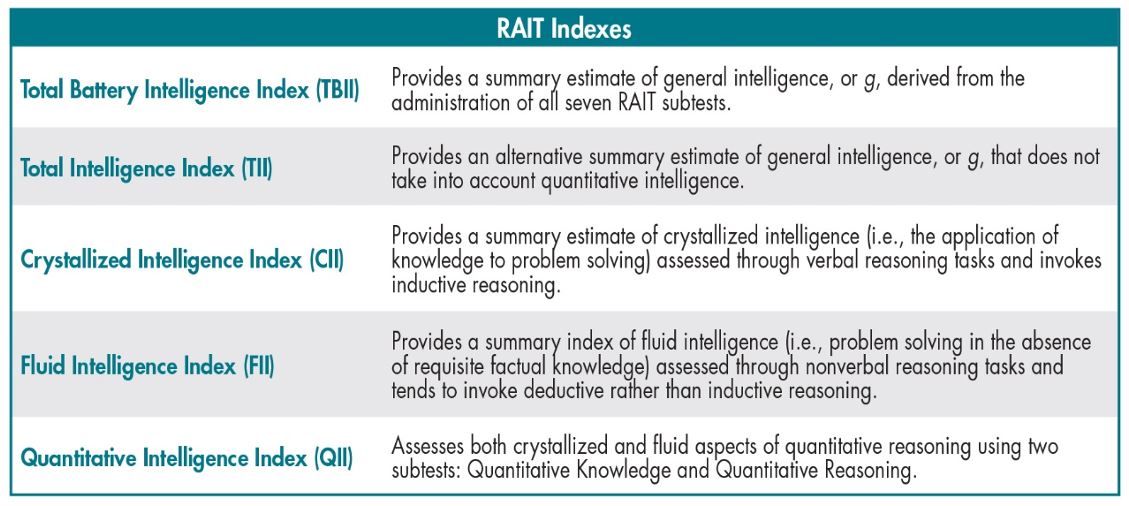Register now and start:
- Accessing PAR Training
- Shopping PAR products & tools
- Using online assessments with PARiConnect
The RAIT is an intelligence test designed for group or individual administration for use with examinees ages 10 to 75 years. It is composed of seven subtests that assess crystallized, fluid, and quantitative aptitude or intelligence. Give the full battery or abbreviated version.
